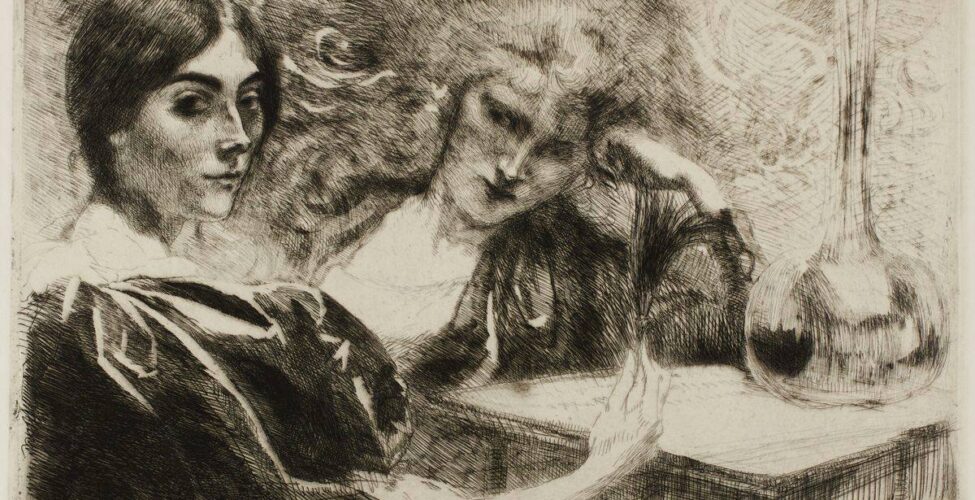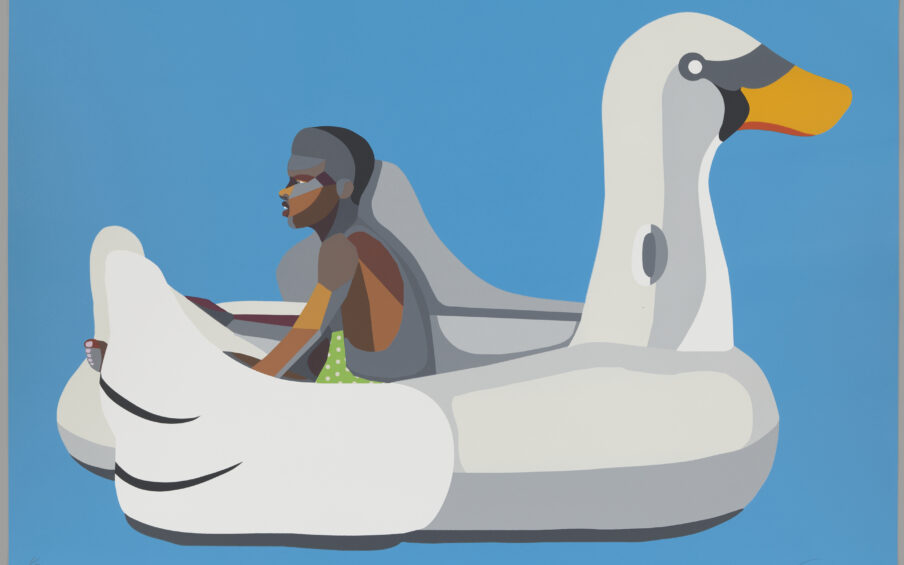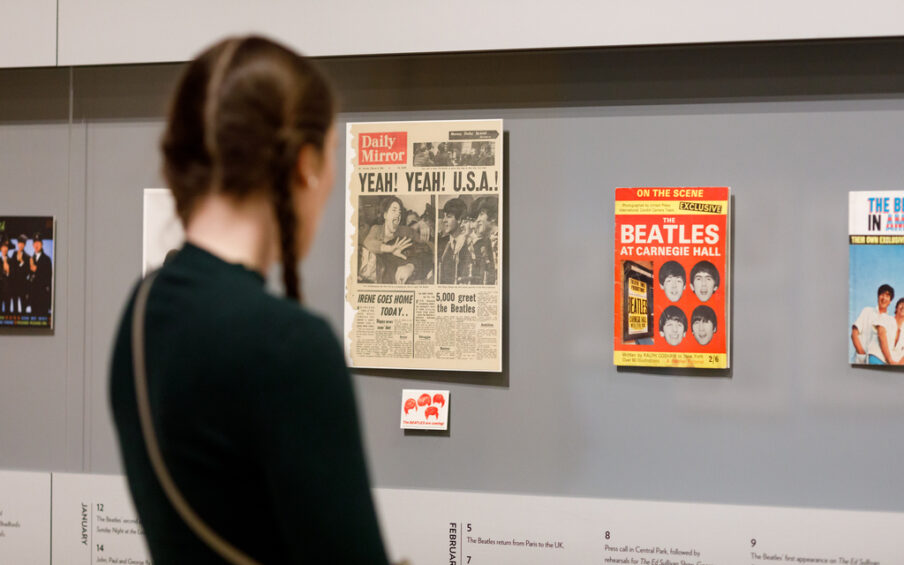“In late nineteenth-century Paris, morphine, a powerful opiate, was both legal and widespread. Although addiction afflicted all classes of society, artists were particularly fond of depicting fashionable women as part of the decadent underbelly of the city. In this etching, Besnard depicts two glassy-eyed morphinomanes (morphine addicts) relaxing into a stupor. The carafe on the table suggests additional intoxicants—alcohol, perhaps, or absinthe?—while the smoke swirling about their heads evokes the interior of an opium den. Interestingly, the artist eschews all obvious tools and iconography of morphine use, and only the title alerts the viewer that this is not a typical Parisian café. The suggestive placement of the feather in the brunette’s hand, however, may be a coded reference to the needle used to inject the potent substance, while Besnard’s whispery use of drypoint creates an ethereal, dreamlike atmosphere of oblivion and escape.”
—Mary Weaver Chapin, Curator of Prints and Drawings
Albert Besnard (French, 1849–1934). Morphinomanes ou Le Plumet (Morphine Addicts or The Feather), 1887. Etching on Japan paper. Museum Purchase: Jean Y. Roth Memorial Fund, 2014.40.1



